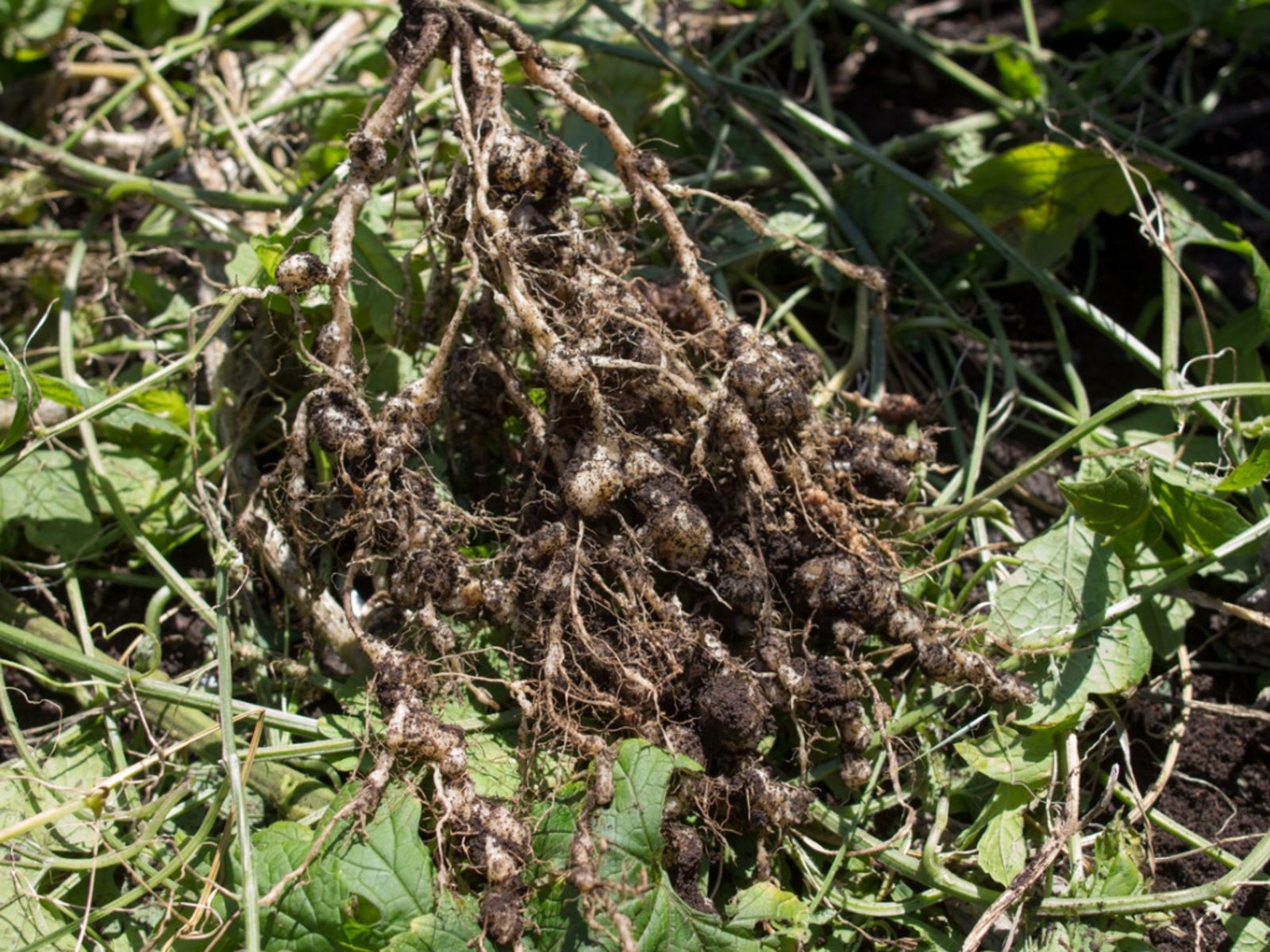What Is A Golden Nematode: Learn About Golden Nematode Control


If you’ve never read any golden nematode information, you might not know about golden nematodes in gardens. Golden nematodes are among the world’s most damaging pests of potato plants and other plants in the nightshade family. Read on for more golden nematode information including methods of golden nematode control.
What is a Golden Nematode?
They may be termed “golden,” but that doesn’t mean they are good for your garden. What is a golden nematode? It is an insect that attacks plants in the nightshade family including potatoes, eggplant, and tomato plants. Golden nematode information helps you understand how these pests injure your garden plants. The damage is done when the golden nematode is in the larval stage. Larvae live on or near the host plant’s roots and bore into the plant roots to suck out their juices, weakening and eventually killing the plants.
Golden Nematode Information
The life cycle of the golden nematode has three stages: egg, larva, and adult. Golden nematodes in gardens pass through these life stages in between five and seven weeks. The female adult mates, then lays eggs on the host plant’s roots. The female nematodes die and their bodies harden into cysts that cover and protect the eggs. The cysts are tiny, no bigger than a pinhead, yet each can contain some 500 golden nematode eggs. The eggs stay dormant in the soil for up to 30 years until the host plants release a chemical that stimulates the eggs to hatch into larvae. Hatched larvae enter the roots and begin feeding. Since the roots are the first part of the plant infested, you may not notice anything immediately. In time, you will see that your plants are not thriving. If the infestation is heavy, the plant foliage yellows, wilts, and dies.
Treating for Golden Nematodes
Golden nematode control is difficult. Golden nematodes in gardens usually arrive when soil containing cysts finds its way into your backyard. This can happen via infected seed potatoes, flower bulbs, or garden tools. If you live in an area with a nematode infestation, regulations are probably in place requiring field workers to clean and disinfect equipment. Your best move toward golden nematode control is to plant nematode-resistant plant varieties and to rotate these with other, non-host crops like corn, soybeans, or wheat. In areas of the country fighting nematode infestations, growers wishing to plant potatoes can be obligated to follow a crop rotation plan designed by scientists to reduce the spread of the cysts, and is monitored by inspectors to ensure compliance. How about treating for golden nematodes with chemicals? Chemicals used to control nematodes – termed nematicides – are available. When you are treating for golden nematodes in special situations, the use of these may help.
Gardening tips, videos, info and more delivered right to your inbox!
Sign up for the Gardening Know How newsletter today and receive a free copy of our e-book "How to Grow Delicious Tomatoes".

Teo Spengler is a master gardener and a docent at the San Francisco Botanical Garden, where she hosts public tours. She has studied horticulture and written about nature, trees, plants, and gardening for more than two decades. Her extended family includes some 30 houseplants and hundreds of outdoor plants, including 250 trees, which are her main passion. Spengler currently splits her life between San Francisco and the French Basque Country, though she was raised in Alaska, giving her experience of gardening in a range of climates.
-
 Zinnias On Repeat: 10 Glorious Cut-And-Come-Again Varieties For Endless Summer Bouquets
Zinnias On Repeat: 10 Glorious Cut-And-Come-Again Varieties For Endless Summer BouquetsThese zinnia varieties keep giving all summer, making them the perfect choice for dedicated cutting gardens – or just the occasional homegrown bouquet.
By Ellen Wells
-
 Create A Romantic Garden Straight Out Of Bridgerton: Regency Era Romance In Your Garden
Create A Romantic Garden Straight Out Of Bridgerton: Regency Era Romance In Your GardenTry some romantic garden ideas straight out of Bridgerton. Flowers and gardens in the Regency era were lush and charming and you can get the same look!
By Bonnie L. Grant